Laos
in brief
Official Name:
Laos People’s Democratic Republic (Laos PDR)
Founding Day:
2nd December 1975 (National Day)
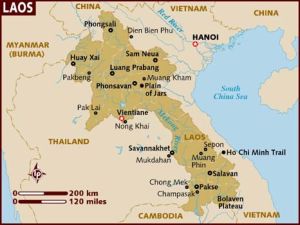
Laos is a landlocked nation in Southeast Asia occupying the northwest portion of the Indochinese peninsula, Laos is surrounded by China, Vietnam, Cambodia, Thailand, and Burma. It is twice the size of Pennsylvania. Laos is a mountainous country, especially in the north, where peaks rise above 9,000 ft (2,800 m). Dense forests cover the northern and eastern areas. The Mekong River, which forms the boundary with Burma and Thailand, flows through the country for 932 mi (1,500 km) of its course. The total area of 236,800 square kilometres of which two-thirds is mountainous.
The Laos PDR is criss-crossed with a myriad of rivers and streams. The largest is the Mekong River which is the main geographical feature in the West. In the Southern part, the Mekong River reaches a breadth of 20 kilometres, creating an area with thousands of small islands. It is estimated that 60% of the water entering the Mekong River system originates in Laos PDR. These rivers and streams provide great potential for hydropower development with 51% of the power potential in the lower Mekong basin contained within Laos PDR.
Time in Laos is 7 hours ahead of Greenwich Mean Time (GMT+7).
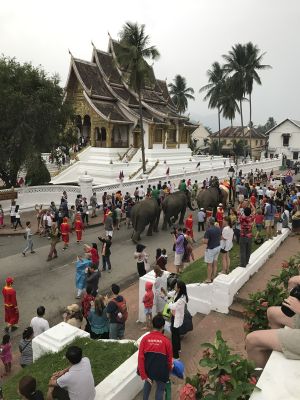
Laos has a total population of 6.8 million (2013), with an average annual growth rate of 1.6 percent. People share a rich ethnic diversity, comprising such groups as Hmong, Khmu, Yao, A’kha, Ikoh, Lu etc. Most of them have kept their own customs, dialects and traditional dress. In total 47 different groups are accounted for in Laos. These can be classified into three broad groups:
The Laos Lum (lowlanders) who make up 70% of the population and predominantly live along the Mekong river.
The Laos Theung (uplanders) who comprise 20% of the population and live on the lopes and hills with an elevation of less than 1,000 metres.
The Laos Soung (hill tribes) who constitute 10% of the population and live in the mountainous areas.
The population density of Laos amounts to 29 people per square kilometre, a small number compared to the country’s neighbors. The Laos population lives in 799, 289 households in 11, 386 small villages (Bans) located in 142 districts (Muongs).
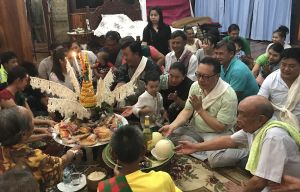
Laos language is the national language. Other languages used are French, English. Chinese, Thai and Vietnamese.
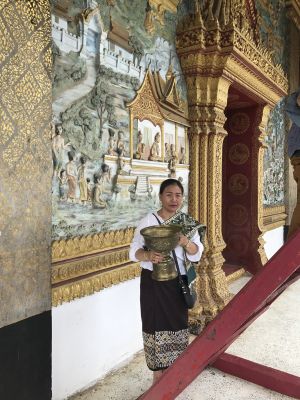
The Lao People migrated into Laos from southern China from the 8th century onward. In the 14th century, the first Laostian state was founded, the Lan Xang kingdom, which ruled Laos until it split into three separate kingdoms in 1713. During the 18th century, the three kingdoms came under Siamese (Thai) rule and, in 1893, became a French protectorate. With its territory incorporated into Indochina. A strong nationalist movement developed during World War II, but France reestablished control in 1946 and made the king of Luang Prabang constitutional monarch of all Laos. France granted semiautonomy in 1949 and then, spurred by the Viet Minh rebellion in Vietnam, full independence within the French Union in 1950.
In 1951, Prince Souphanouvong organized the Pathet Laos, a Communist independence movement, in North Vietnam. Viet Minh and Pathet Laos forces invaded central Laos, resulting in civil war. By the Geneva Agreements of 1954 and an armistice of 1955, two northern provinces were given to the Pathet Laos; the rest went to the royal regime. Full sovereignty was given to the kingdom by the Paris Agreements of Dec. 29, 1954. In 1957, Prince Souvanna Phouma, the royal prime minister, and Pathet Laos leader Prince Souphanouvong, the prime minister's half-brother, agreed to reestablishment of a unified government, with Pathet Laos participation and integration of Pathet Laos forces into the royal army. The agreement broke down in 1959, and armed conflict began anew.
In 1960, the struggle became a three-way fight as Gen. Phoumi Nosavan, controlling the bulk of the royal army, set up in the south a pro-Western revolutionary government headed by Prince Boun Oum. General Phoumi took Vientiane in December, driving Souvanna Phouma into exile in Cambodia. The Soviet block supported Souvanna Phouma. In 1961, a cease-fire was arranged and the three princes agreed to a coalition government headed by Souvanna Phouma.
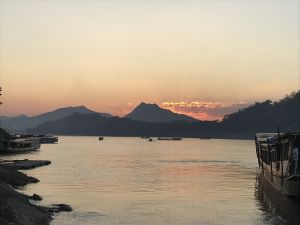
Laos enjoys a tropical climate with two distinct seasons-the rainy season from the beginning of May to the end of September and the dry season from October through to April. The yearly average temperature is about 28 C, rising to a maximum of 38 C in April and May. In mountainous areas, however, temperatures drop to 14-15 C during the winter months, and in cold nights easily reach the freezing point.
The average precipitation is highest in southern Laos, where the Annamite mountains receive over 3000 mm annually. In Vientiane rainfall is about 1500-2000 mm, and in the northern provinces only 1000 -1500 mm.
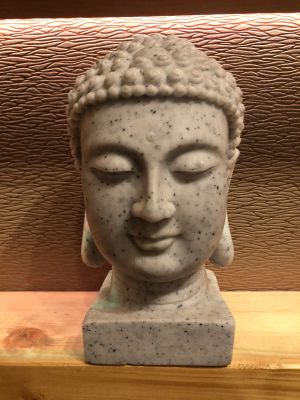
Buddhism first appeared in Laos during the eighth century AD. as shown by both the Buddha image and the stone inscription found at Ban Talat near Vientiane, now exhibited at the Museum of Ho Prakes. After the foundation of the unified Kingdom of Lane Xang, King FaNgum (14th century) declared. Buddhism as the state religion and urged the people to abandon animism or other beliefs such as the cult of spirits. His policy meant to develop the Laos culture based on a common faith: the Theravada Buddhism. Today Theravada Buddhism is the professed religion of about 90% of Laos people. Buddhism is an inherent feature of daily life and casts a strong influence on Laos society. Laos woman can be seen each morning giving alms to monks, earing merit to lessen the number of their rebirth. Laos men are expected to become a monk for at least a short time in their lives. Traditionally they spent three months during the rainy season in Vat, a Buddhist temple. But nowadays most men curtail their stay to one or two weeks.
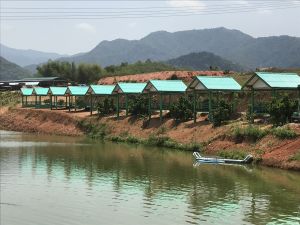
Laos people boast a plethora of distinctive monuments and architectural styles. One of the most notable structures is That Luang, the Great Sacred Stupa, in Vientiane. Its dome like stupa and four-cornered superstructure is the model for similar monuments throughout Laos. Stupas serve to commemorate the life of the Buddha and many stupas are said to house sacred relics (Parts of Buddha’s boby).
Generally, Hinayana Buddhists cremate the dead body then collected the bones and put in the stupa which winds up around the temple. Different styles of architecture are evident in the numerous Buddhist vats. Three archtectural styles can be distinguished, corresponding to the geographical location of the temples and monasteries. Vats built in Vientiane are large rectangular structures constructed of brick and covered with stucco and highŒ-peaked roofs. In Luang Prabang the roofs sweep very low and, unlike in Vientiane, almost reach the ground. These two styles are different from the vats of Xieng Khouang where the temple roofs are not tiered.
Religious influences are also pervasive in classical Laos literature, especially in the pha Lak pha Lam, the Laos version of India’s epic Ramayana. Projects are underway to preserve classic Laos religious scripts which were transcribed into palm leaf manuscripts hundreds of years ago and stored in vats.
Another excellent example for the richness of Laos culture is its folk music, which is extremely popular with the people throughout the whole country. The principal instrument is the khaen, a wind instrument which comprises a double row of Bamboo-like reeds fitted into a hardwood sound-box. The khaen is often accompanied by a bowed string instrument or saw. The national folk dance is the lamvong, a circle dance in which people dance circles around each other so that ultimately there are three circles: a circle danced by the individual, another one by the couple, and a third one danced by the whole party.
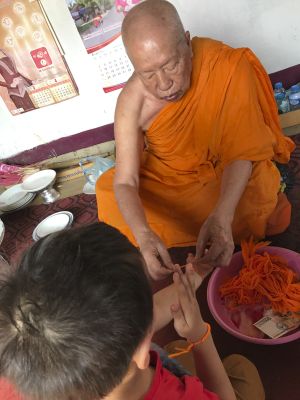
Laos people are frank, open and friendly, and they possess a strongly developed sense of courtesy and respect. Everyone who adheres to the latter will receive a warm welcome.
The generally accepted form of greeting among Laos people is the nop. It is performed by placing one’s palm together in a position of praying at chest level, but not touching the body. The higher the hands, the greater the sign of respect. Nonetheless, the hands should not be held above the level of the nose. The nop is accompanied by a slight bow to show respect to persons of higher status and age. It is also used as an expression of thanks, regret or saying good-bye. But with western people it is acceptable to shake hands.
When entering a vat or a private home it is customary to remove one’s shoes. In Laos homes raised off the ground, the shoes are left at the stairs. In traditional homes one sits on low seats or cushions on the floor. Men usually sit with their legs crossed or folded to one side, women prefer solely the latter. Upon entering guests may be served fruit or tea. These gestures of hospitality should not be refused.
Since the head is considered the most sacred part of the body and the soles of the feet the least, one should not touch a person’s head nor use one’s foot to point at a person or any object. Moreover men and women rarely show affection in public. It is also forbidden for a woman to touch a Buddhist monk.
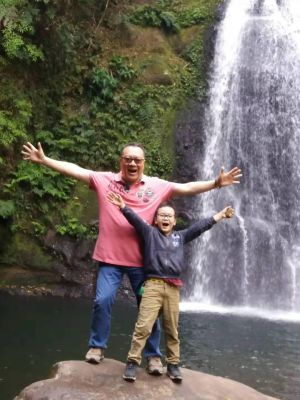
The Laos PDR has large untapped hydropower potential and is situated in a region where electricity demand will likely rise in the long term. There are three medium-scale hydroelectric plants in operation so far, of which Nam Ngum 1 is the biggest with am installed capacity of 150 MW. The three plants, with a combined capacity of 203 MW, reportedly realise less than two percent of the country's hydroelectric potential. In mid-1998, the Theun Hinboon power plant began operation, effectively doubling the country's energy output, with 210 MW of capacity. Agreements have been signed to export 95 percent of this energy to Thailand, with the remaining to be sold within the Laos PDR. Overall, about 70 percent of current hydroelectric power production is exported to Thailand, constituting one of the leading exports of the Laos PDR. Agreements have been signed with Vietnam and Cambodia for future exports of electricity. Development of the country's dydropower resources is seen as a necessity if export earning are to increase in the future. Plas are underway to construct a number of new hydroelectric power facilities, including Nam Ngum 2 and 3, and Nam Theun 2 - the biggest, with an estimated cost of US$ 1.2 billion. Exploitation of natural resources for hydroelectric power production is being carefully evatuated in light of potentially serious environmental implications.
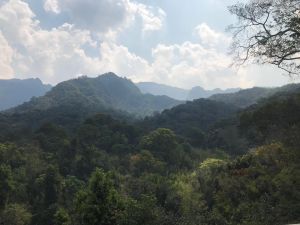
Forests cover about 47 percent of the country, comprising a wide variety of commercial tree species suitable for production of sawn timber, plywood, parquet, and furniture. Forest resources represent a major source of foreign exchange as export of wood products contributes 39 percent of total export earnings. Ninety percent of domestic energy consumption is based on fuel wood. An estimate 400,000 to 600,000 cubic meters of timber are commercially harvested annually or are degraded by shifting cultivation.
Preparations for new hydropower schemes have led to the advance clearing of forests in demarcated reservoir basins. This activity currently represents a major part of total logging. In an effort to conserve forest resources, protective measures are being implemented to reduce shifting cultivation, and, to a lesser degree, to manage commercial logging operations, The forests of the Laos PDR have worldwide importance for biogeographic sub-units. The government has established about 20 national biodiversity conservation areas covering representative samples of significant plant communities, and is preparing management plans to maintain them.
Deposits of gemstones such as sapphire, zircon and amethyst as well as gold, copper, iron ore and tin are known to exist in the country. Current mining activities consist of extraction of tin and gypsum, mainly used in the domestic construction sector. Exploration for oil and gas has produced limited results. Sizeable lignite and coal deposits are set for imminent development. Exploitation of mineral resources will only be economically feasible if the country's physical infrastructure is improved. A new mining law was passed in April 1997. There is concern among the development community that this law, as currently written, will not provide foreign investors with the necessary incentives to proceed with large-scale exploration projects.

Over 2.1 million people in Laos PDR, almost on-half of the total population, live in poverty. About 1.9 million of the poor are in the rural areas where poverty incidence of 53 percent is more than double that in urban areas, estimated at 24 percent. Among the three regions of the country, the South exhibits the highest poverty incidence at 60 percent. In the rural South, 66 percent of the population, or two out of three people live in poverty.
There are no national unemployment numbers for Laos, but a 1994 survey of five urban centres (Vientiane, Luang Prabang, Savannakhet, Pakse and Thakek) concluded that 5.6 percent of the labour force, the population who are usually economically active, was unemployed. Lack of skilled workers has led to an increase in private sector salaries, particularly for managers, technicians and professionals.

The Laos PDR adopted its first Constitution in 1991, and amended it in 2003 in order to meet the needs of the socio-economic development, as well as regional and international cooperation and integration. The Constitution clearly established such a political system that the Laos PDR is a people's democratic state; all powers belong to the people, and are exercised by the people and for the interests of the Laos multi-ethnic people. The rights of the Laos multi-ethnic people as masters of the country are exercised and guaranteed through the functioning of the political system which the Laos multi-ethnic people have chosen on the basis of the right to self-determination through the election of a body that represents their powers and interests called the National Assembly.
The administrative system of the Laos PDR consists of the organs of state powers, namely the National Assembly, the Government, the People's Courts and the People's Prosecutor Offices. In addition to the organs of state powers, the Laos Front for National Construction, mass organisations such as the Laos Federation of Trade Unions, the Lao People's Revolutionary Youth Union, the Laos Women's Union, the Federation of Military Veterans, and other social and professional organisations operate in the country with a view to uniting and mobilising the Laos multi-ethnic people of all social strata in carrying out the tasks of protection and development of the country, to protecting the rights and legitimate interests of the respective organisations' members.
The National Assembly is a state organ representing the rights and interests of the Laos multi-ethnic people. The National Assembly is the supreme organ of state powers and also the legislative branch with the powers to make decisions on fundamental issues of the country, to oversight the activities of the executive organs, the people's courts and the offices of the people's prosecutors. The election of the National Assembly members is carries out on the basis of the principles of universality, equality, direct suffrage and secret ballot.
The Head of State is the President who is elected by the National Assembly with two-thirds of the votes of all members of the National Assembly attending the session. The term of his office is the same as the term of the National Assembly's office (Five years).
The Government is the executive branch of state powers. The Government administers in a unified manner the implementation of the State's duties in all fields such as political, economic, cultural, social, national defence and security, and foreign affairs. The local administration is comprised of 16 provinces and the Capital of Vientiane.
The Head of Government is the Prime Minister who is appointed by the President after the approval of the National Assembly. He leads and manages the work of the government, ministries, ministry-equivalent organisations and other organisations related to the government as well as the work of provinces and capital.
The Government of the Laos PDR consists of 18 Ministries and 3 ministry-equivalent organisations as follows:
- Government's Office
- Ministry of National Defence
- Ministry of Public Security
- Ministry of Foreign Affairs
- Ministry of Justice
- Ministry of Home Affairs
- Government Inspection Authority
- Ministry of Education and Sports
- Ministry of Health
- Ministry of Information, Culture and Tourism
- Ministry of Labor and Social Welfare
- Ministry of Planning and Investment
- Ministry of Finance
- Ministry of Agriculture and Forestry
- Ministry of Natural Resources and Environment
- Ministry of Energy and Mines
- Ministry of Industry and Commerce
- Ministry of Public Works and Transport
- Ministry of Science and Technology
- Ministry of Post, Telecoms and Communication
- The Bank of the Laos PDR
The people's courts constitute the judicial branch of the state, consisting of the People's Supreme Court, regional courts, provincial courts, district courts, and the military courts. The People's Supreme Court is the highest judicial organ of the State. The people's courts make decisions in a collective manner. In their adjudication, judges must be independent and strictly comply with the laws. Final court judgments are to be respected by all organisations of the Party, the State, the Laos Front for National Construction, all mass and social organisations, enterprises, and all citizens. Individuals and organisations concerned must strictly implement them.
The Office of the People's Prosecutor has the duty to monitor the implementation of the laws. The Office of the People's Prosecutor consists of the Offices of the Supreme People's Prosecutor, regional, provincial, district prosecutors and military prosecutors. It has the rights and duties to monitor and to supervise the correct and uniform implementation of laws and Government, the Laos Front for National Construction, mass organisations, social organisations, local administrations, enterprises, civil servants and citizens; and to exercise the right of public prosecution.

